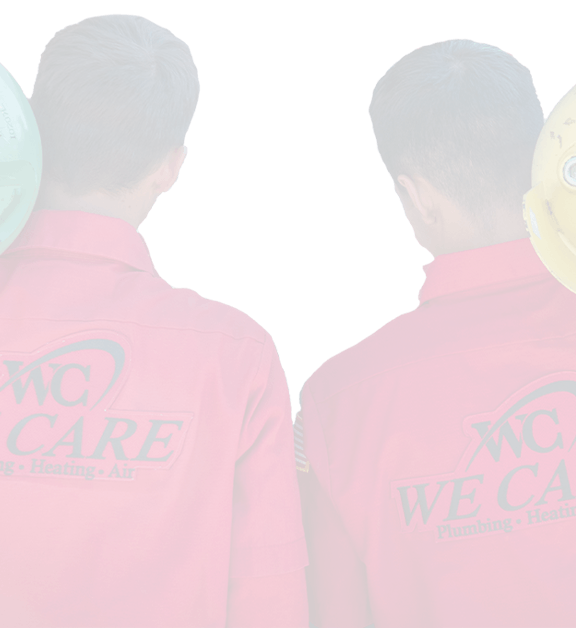Proper ventilation in your attic is far more important than you may realize. Homes with poorly ventilated attics almost always have higher energy bills, and a lack of ventilation will also almost always make the roof on the house not last nearly as long. This article will explain the types of attic ventilation, how it works, and how ventilation can lower your energy costs and help your roof last longer.
How Attic Ventilation Works
For an attic to be properly ventilated, it has to have sufficient intake vents and exhaust vents. This allows for passive ventilation that occurs naturally due to hot air rising and/or because of wind. The specific number of vents needed and the type of vents used varies depending on the size of the attic and the type of roof the home has.
Many homes have soffit vents on the underside of the roof eaves on the front and back of the house. Homes with a hip roof potentially have a soffit vent on all four sides. These vents are usually spaced out for homes with smaller attics requiring less ventilation. When more ventilation is required, vented soffit panels are sometimes used along the entire length of each of the eaves.
Soffit vents always serve as the intake vents, and there will then be vents higher up on the roof itself or on the sides of the attic that serve as the outlet vents. One common option is to have ridge vents along the roof’s peak. The fact that hot air rises means it will continually flow up and out of the ridge vents. This results in cooler air from outside getting drawn into the attic through the soffit vents.
Many homes with a gable roof have one or more vents near the top of the gable ends on each side of the house. Gable vents can serve as both intake and exhaust vents. Which gable end is the intake and which is the exhaust depends on which direction the wind is currently blowing. While gable vents can be effective, they will still work better when additional vents are in the soffits or on the roof near the bottom edges. This will ensure that air continues to flow through the attic when the wind isn’t blowing, which doesn’t always happen when the attic only has gable vents.
How Attic Ventilation Impacts a Home’s Energy Efficiency
One of the reasons why attic ventilation is so important is that it has a major impact on the energy efficiency of your HVAC system. This is especially true in hotter climates like southern California. An unventilated or insufficiently ventilated attic always gets extremely hot in summer. If the outdoor temperature is around 90 degrees, the temperature in an attic that isn’t sufficiently ventilated will usually rise to anywhere from 140 to 170 degrees. This happens because roofs always absorb lots of heat from sunlight, which then penetrates through the roof and quickly heats up the attic. Without adequate ventilation, the temperature in the attic also won’t decrease overnight when it’s cooler outside since all the hot air is trapped in the attic with no way to escape.
When the temperature in the attic is extremely hot, it will also make the rooms just below the attic much hotter. Having a properly insulated attic floor helps to lessen this effect. However, it still won’t make enough of a difference to keep the attic from heating up other parts of the home. This issue obviously has a significant impact on the home’s air conditioning system since it has to work much harder to remove all of the extra heat coming into the home from the attic. As such, the AC system will end up using far more energy. The extra workload also puts additional strain on the AC system, which will usually shorten its lifespan and make it much more prone to needing repairs.
If an attic has proper ventilation, it should generally never be any hotter than the temperature outside. The roof will still absorb heat that penetrates through the roof deck into the attic, but the hot air will flow out through the ridge or gable vents and be replaced by air from outside. The attic will also cool down fairly quickly once the sun goes down and the outdoor temperature decreases. This has the advantage of reducing the workload on the AC system even further in the evenings.
How Proper Ventilation Helps Protect a Roof
The other reason proper ventilation is indispensable is that it helps protect a roof from damage and allows it to last much longer than it would if the attic wasn’t sufficiently ventilated. A poorly ventilated or unventilated attic also gets extremely humid during the hotter months, even if the outdoor air is relatively dry. The reason for this is that many sources in a home give off moisture and make the interior environment more humid than outdoors. For instance, cooking, doing laundry, bathing, and running the dishwasher release some steam or moisture. Humans also continually release moisture into the air because we sweat, which evaporates to help us stay cool.
When the hotter air in a home rises and seeps through the ceilings into the attic, it also carries much of this moisture with it. The hotter the attic, the more humid it will get since warm air can hold much more moisture. This generally isn’t much of an issue if the attic is sufficiently ventilated since the heat and moisture will flow out of it and be replaced by cooler, drier air from outside. Without proper ventilation, an attic can get so humid that it can lead to the wooden roof deck and roof trusses or rafters quickly starting to rot.
This is a serious issue since the rotten sheets on the roof deck can lead to the roof sagging and potentially put parts of it at risk of collapsing. Any rot will also cause the roof to fail and must be replaced much sooner. If the roof sheets have started to rot, the cost of replacing the roof will also increase. If none of the sheets are rotten, the roof deck usually doesn’t need to be replaced when replacing the shingles. Without proper attic ventilation, you will almost always have to replace some or all of the roof sheets.
An insufficiently ventilated attic also dramatically increases the risk of mold and mildew growth. If a mold infestation occurs, you’ll need to pay for costly mold remediation. This means having to remove all of the moldy insulation and building materials, disinfect the entire area to kill the mold, and then have the attic reinsulated.
Trust the Experts
We Care Plumbing, Heating, & Air has served residents in Temecula, Murrieta, Orange, San Marcos, and Southern California for 20 years. We’re ready to handle all of your air conditioning and heating needs as well as plumbing issues. To learn more about how you can improve your HVAC system’s efficiency or to schedule any heating, cooling, or plumbing service, contact We Care Plumbing, Heating, & Air today.






